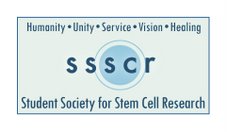October 2008 Volume 8 Number 10
Visit Nature Reviews Immunology online to browse the journal.
Now available at http://ealerts.nature.com/cgi-bin24/DM/y/enmB0Xztnp0Hjd0cxy0Eg
Please note that you need to be a subscriber to enjoy full text access to Nature Reviews Immunology online. To purchase a subscription, please visit:
http://ealerts.nature.com/cgi-bin24/DM/y/enmB0Xztnp0Hjd0a2N0El
Alternatively, to recommend a subscription to your library, please visit
http://ealerts.nature.com/cgi-bin24/DM/y/enmB0Xztnp0Hjd0sGj0Es
*********************************************************************
Nature Reviews Immunology Impact Factor: 28.3*
(*Journal Citation Reports, Thomson, 2007)
*********************************************************************
=====================================================================
This alert is sponsored by A-IMBN RESEARCH
A-IMBN Research
http://ealerts.nature.com/cgi-bin24/DM/y/enmB0Xztnp0Hjd0B6Ry0EP
bringing you the some of the best research being published in the
Asia-Pacific region... For FREE!
Latest Highlights: http://ealerts.nature.com/cgi-bin24/DM/y/enmB0Xztnp0Hjd0BtmN0EB
"First things first",
"Controlling cholesterol by controlling traffic",
"Deciphering how malaria parasites hijack red blood cells",
"Stem cell protein may drive cancer" and many more!
Register for free Email Alert today!
http://ealerts.nature.com/cgi-bin24/DM/y/enmB0Xztnp0Hjd0Brgr0Ed
=====================================================================
=====================================================================
Nature Reviews Microbiology
October 2008 - Focus on Symbiosis
Microbial symbioses include beneficial, harmful and neutral
relationships and are important in animal and plant health, immunity
and disease, and in ecology and the environment. This special Focus
issue highlights exciting advances in our understanding of
partnerships between organisms and their environments.
This FREE focus can be accessed online at:
http://ealerts.nature.com/cgi-bin24/DM/y/enmB0Xztnp0Hjd0B5R50EG
=====================================================================
=====================================================================
This month's FEATURED article:
A signal–switch hypothesis for cross–regulation of cytokine and TLR
signalling pathways
Lionel B. Ivashkiv
p816 | doi:10.1038/nri2396
http://ealerts.nature.com/cgi-bin24/DM/y/enmB0Xztnp0Hjd0B6Rz0EQ
=====================================================================
From the editors
p745 | doi:10.1038/nri2429
http://ealerts.nature.com/cgi-bin24/DM/y/enmB0Xztnp0Hjd0B6R10ED
----------------------
RESEARCH HIGHLIGHTS
----------------------
Innate immunity: Swarms defend against parasites
p746 | doi:10.1038/nri2420
http://ealerts.nature.com/cgi-bin24/DM/y/enmB0Xztnp0Hjd0B6R20EE
T cells: Selection and tolerance involve autophagy
p747 | doi:10.1038/nri2418
http://ealerts.nature.com/cgi-bin24/DM/y/enmB0Xztnp0Hjd0B6R30EF
IN BRIEF
Inflammation | Vaccines | HIV
p747 | doi:10.1038/nri2428
http://ealerts.nature.com/cgi-bin24/DM/y/enmB0Xztnp0Hjd0B6R40EG
Autoimmunity: The threat within
p748 | doi:10.1038/nri2419
http://ealerts.nature.com/cgi-bin24/DM/y/enmB0Xztnp0Hjd0B6R50EH
Inflammation: Dealing with excessive cell death
p748 | doi:10.1038/nri2425
http://ealerts.nature.com/cgi-bin24/DM/y/enmB0Xztnp0Hjd0B6R60EI
IN BRIEF
Inflammation | Viral immunity | Natural killer T cells
p749 | doi:10.1038/nri2430
http://ealerts.nature.com/cgi-bin24/DM/y/enmB0Xztnp0Hjd0B6R70EJ
T-cell activation: Variation is the spice of life
p750 | doi:10.1038/nri2421
http://ealerts.nature.com/cgi-bin24/DM/y/enmB0Xztnp0Hjd0B6R80EK
Innate immunity: STING: adding to the antiviral arsenal
p750 | doi:10.1038/nri2424
http://ealerts.nature.com/cgi-bin24/DM/y/enmB0Xztnp0Hjd0B6SA0EU
Innate immunity: PIMS knows friends and foes
p751 | doi:10.1038/nri2422
http://ealerts.nature.com/cgi-bin24/DM/y/enmB0Xztnp0Hjd0B6SB0EV
Regulatory T cells: MicroRNAs maintain identity
p752 | doi:10.1038/nri2426
http://ealerts.nature.com/cgi-bin24/DM/y/enmB0Xztnp0Hjd0B6SC0EW
WEB WATCH
A systems approach to immunology
p752 | doi:10.1038/nri2427
http://ealerts.nature.com/cgi-bin24/DM/y/enmB0Xztnp0Hjd0B6SD0EX
=====================================================================
----------------------
REVIEWS
----------------------
The alliance of sphingosine-1-phosphate and its receptors in immunity
Juan Rivera, Richard L. Proia and Ana Olivera
p753 | doi:10.1038/nri2400
Recent research has shown that the interaction of sphingosine-1-phosphate with its receptors (S1PR1–S1PR5) has an essential role in regulating immune responses, not only through the control of immune-cell trafficking but also through effects on immune-cell function. Understanding these effects holds promise for the use of S1PR ligands as immunomodulatory therapeutics.
Abstract: http://ealerts.nature.com/cgi-bin24/DM/y/enmB0Xztnp0Hjd0B6SE0EY
Article: http://ealerts.nature.com/cgi-bin24/DM/y/enmB0Xztnp0Hjd0B6SF0EZ
Article series: Tissue-specific immune responses
http://ealerts.nature.com/cgi-bin24/DM/y/enmB0Xztnp0Hjd0B6VA0EX
Form follows function: lymphoid tissue microarchitecture in antimicrobial immune defence
Tobias Junt, Elke Scandella and Burkhard Ludewig
p764 | doi:10.1038/nri2414
The anatomy of secondary lymphoid organs defines the ability of an organism to respond to pathogens. In this Review, the authors describe how the functional microarchitecture of these structures is both a determinant and a result of antimicrobial immunity.
Abstract: http://ealerts.nature.com/cgi-bin24/DM/y/enmB0Xztnp0Hjd0B6SH0Eb
Article: http://ealerts.nature.com/cgi-bin24/DM/y/enmB0Xztnp0Hjd0B6SI0Ec
Harmful molecular mechanisms in sepsis
Daniel Rittirsch, Michael A. Flierl and Peter A. Ward
p776 | doi:10.1038/nri2402
Sepsis is an overwhelming systemic inflammatory response to severe microbial infection or extensive tissue damage. In this Review, the authors highlight recent molecular data that help to unravel the mechanisms that underlie dysregulation of immune responses in this syndrome.
Abstract: http://ealerts.nature.com/cgi-bin24/DM/y/enmB0Xztnp0Hjd0B6SJ0Ed
Article: http://ealerts.nature.com/cgi-bin24/DM/y/enmB0Xztnp0Hjd0B6SK0Ee
Lineage fate and intense debate: myths, models and mechanisms of CD4- versus CD8-lineage choice
Alfred Singer, Stanley Adoro and Jung-Hyun Park
p788 | doi:10.1038/nri2416
What determines whether a developing thymocyte becomes a CD4+ or CD8+ T cell has been an issue of longstanding debate. Here, the authors review the models that have been proposed to explain CD4/CD8-lineage choice and update us on the environmental and transcription factors that might mediate this decision.
Abstract: http://ealerts.nature.com/cgi-bin24/DM/y/enmB0Xztnp0Hjd0B6SL0Ef
Article: http://ealerts.nature.com/cgi-bin24/DM/y/enmB0Xztnp0Hjd0B6SM0Eg
The multifaceted contributions of leukocyte subsets to atherosclerosis: lessons from mouse models
Christian Weber, Alma Zernecke and Peter Libby
p802 | doi:10.1038/nri2415
Atherosclerosis is now widely considered to be a chronic inflammatory disease that is driven by the activities of many leukocyte subpopulations. Here, the authors describe the contribution of different immune-cell subsets to each stage of the disease, revealing complex and dynamic interactions.
Abstract: http://ealerts.nature.com/cgi-bin24/DM/y/enmB0Xztnp0Hjd0B6SN0Eh
Article: http://ealerts.nature.com/cgi-bin24/DM/y/enmB0Xztnp0Hjd0B6SO0Ei
=====================================================================
----------------------
PERSPECTIVE
----------------------
OPINION
A signal-switch hypothesis for cross-regulation of cytokine and TLR signalling pathways
Lionel B. Ivashkiv
p816 | doi:10.1038/nri2396
The activation of immunoreceptor tyrosine-based activation motif (ITAM)-coupled receptors influences signalling pathways downstream of other receptor types. In this Opinion, Lionel Ivashkiv describes how ITAM-dependent signalling can differentially influence cellular responses to Toll-like-receptor ligands and cytokines.
Abstract: http://ealerts.nature.com/cgi-bin24/DM/y/enmB0Xztnp0Hjd0B6Rz0EQ
Article: http://ealerts.nature.com/cgi-bin24/DM/y/enmB0Xztnp0Hjd0B6SP0Ej
=====================================================================
Nature Methods Editors are seeking your input in helping us select
the Method of the Year 2008.
Participate in the selection of the Method of the Year 2008!
Visit http://ealerts.nature.com/cgi-bin24/DM/y/enmB0Xztnp0Hjd0B6SQ0Ek
to cast your vote or nominate a candidate method.
=====================================================================
You have been sent this Table of Contents Alert because you have opted in to
receive it. You can change or discontinue your e-mail alerts at any time,
by modifying your preferences on your nature.com account at:
http://ealerts.nature.com/cgi-bin24/DM/y/enmB0Xztnp0Hjd0Zzu0EV
(You will need to log in to be recognised as a nature.com registrant).
For further technical assistance, please contact our registration department:
registration@nature.com
For print subscription enquiries, please contact our subscription department:
subscriptions@nature.com
For other enquiries, please contact our customer feedback department:
feedback@nature.com
Nature Publishing Group | 75 Varick Street, 9th Floor | New York |
NY 10013-1917 | USA
Nature Publishing Group's worldwide offices:
London - Paris - Munich - New Delhi - Tokyo - Melbourne -
San Diego - San Francisco - Washington - New York - Boston
(c) Copyright 2008 Nature Publishing Group
=====================================================================










